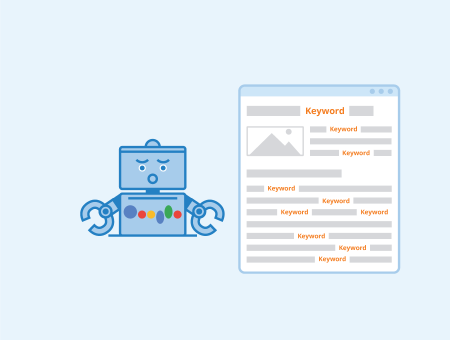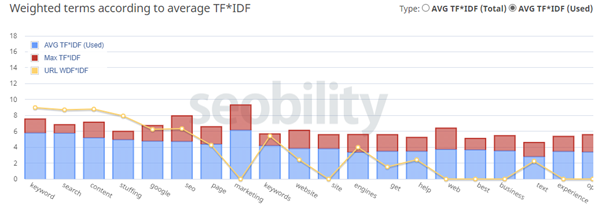What is keyword stuffing?

Keyword stuffing is a form of spam where a website owner tries to add a disproportionately large number of keywords onto a page in a bid to improve their search rankings. Although keyword stuffing used to be a very effective way of ranking higher in the SERPs, today it’s considered a spam technique and can even be penalized by search engines who discover you using it.
Keyword stuffing can be done on the visible page, which often leads to content that doesn’t read well and an overly high keyword density. However, it can also be done using hidden content like meta keywords, which can hide the extra keywords on a page.
The history of keyword stuffing
In the late nineties and early two-thousands, keyword stuffing was a staple of most SEO strategies. Search engines used to rely heavily on term frequency and keyword density to judge relevance and there were only a small number of other ranking factors in use at the time.
Although various other updates that came before it did reduce the effectiveness of keyword stuffing by diluting it as a factor, the Panda update was the first to truly crack down on this black hat SEO practice. Google seemed to double down on this update in 2016, further reducing the effectiveness of keyword stuffing.
Keyword stuffing today
Today, keyword stuffing is generally considered a black hat SEO practice and can get you penalized by search engines. Keyword stuffed pages aren’t seen as often as they used to be, and many on-page SEO tools help prevent it from happening by showing the number of times competitors use keywords on their pages. This allows SEOs to avoid keyword stuffing when optimizing their pages since they can remove keywords if they see the page mentions a keyword far more than currently ranking pages.
How you can avoid keyword stuffing
Various on-page SEO tools, including our own TF*IDF tool, help prevent keyword stuffing while still helping you use important words often enough for your text to be considered as relevant as possible by search engines. These tools can show you how many times competitors use a given word on their page or the ratio with which they use them. This allows you to optimize your pages based on pages that are already ranking and can prevent you from getting penalized for keyword stuffing.
It’s important to write content for the reader first, before using any kind of tool or trying to optimize a text. If content doesn’t provide the reader with the information they need or is difficult for them to read or understand, the page will not be as effective.

An image of our TF*IDF tool showing possible keyword stuffing and advising a webmaster to aim for the red range.
Why it’s relevant for SEO
Since keyword stuffing is considered a form of spam and is against Google’s guidelines, as well as the guidelines of other search engines, it is important to avoid it if you want to rank. By using an on-page SEO tool and writing content for the reader instead of for search engines, SEOs can prevent penalties while also optimizing pages effectively.
Related links
- https://www.searchenginewatch.com/2018/07/13/keyword-stuffing-is-terrible-for-your-seo-heres-what-to-do-instead/
- https://developers.google.com/search/docs/advanced/guidelines/irrelevant-keywords
Similar articles
